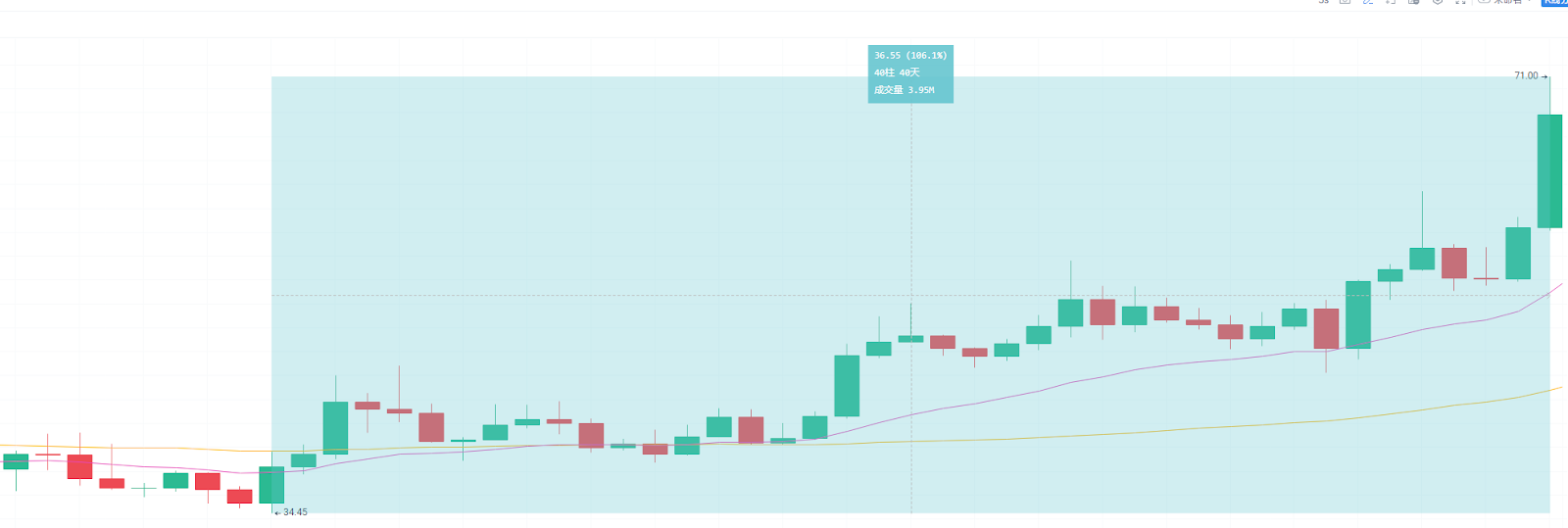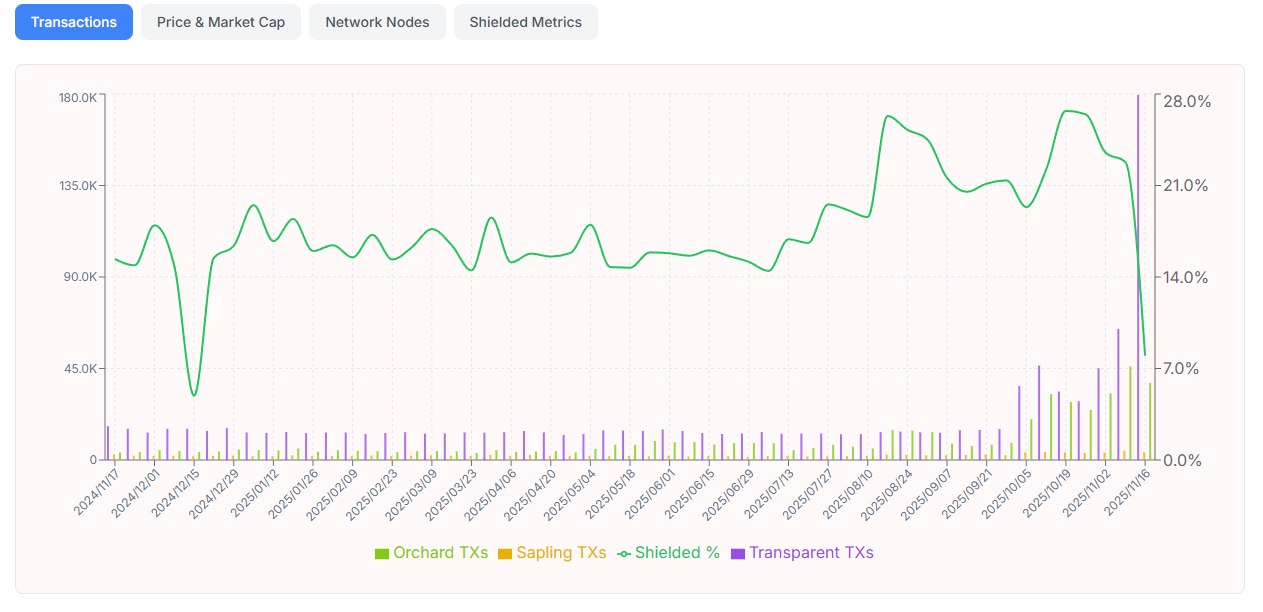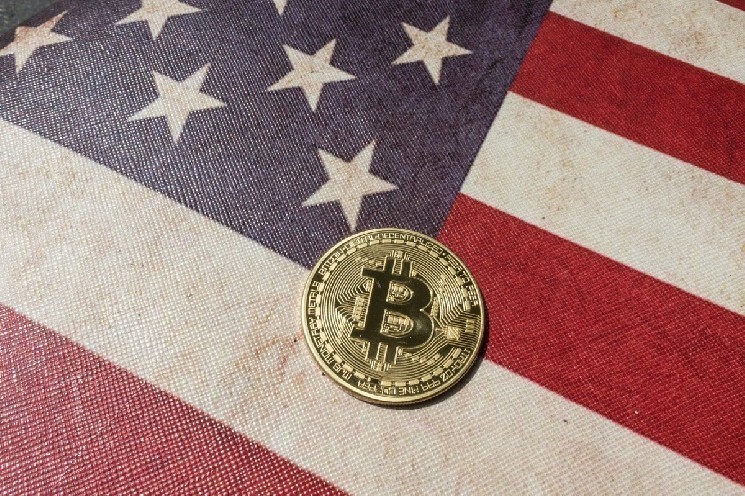Recently, amidst a general correction in the crypto market, Zcash (ZEC) has bucked the trend, surging over 700% in just two months during the fall of 2025, standing out in the crypto market. While Bitcoin and Ethereum investors are struggling in the chill of the "bear market," ZEC holders are enjoying the blazing summer sun.
This stark contrast has raised a core question in the market: Is the surge in ZEC prices a genuine increase in demand for privacy amid tightening global regulations, or merely a speculative frenzy orchestrated by institutional capital and massive leverage?
Data Duet: Privacy Surge and Capital Frenzy
Behind the surge, is Zcash driven by genuine privacy needs or financial speculation? We may need to analyze Zcash's comprehensive data.
First, let's look at on-chain privacy requirements data. The shielded pool is Zcash's core metric, similar to TVL in other public chains, representing the amount of funds participating in privacy features on Zcash. The total amount in the shielded pool has increased significantly in the past six months. On March 27th, the total assets in Zcash's shielded pool were approximately 2.66 million ZEC, rising to around 3.8 million by September, and surging to 4.98 million by November 4th. This is almost double the amount in March.

Furthermore, the percentage of ZEC in the shielded pool relative to the total supply also saw a significant increase, rising from 18% in October to 23% on November 11, and then reaching 29.38% on November 17. As of November 17, a staggering 86% of the 4.81 million shielded ZEC flowed into the Orchard pool (Orchard is currently Zcash's most advanced protocol).
In terms of transaction volume, there has also been a significant increase since October. Before that, Zcash's weekly average number of transactions was approximately 30,000 to 40,000. On October 2nd, this figure surged to 100,000. The week of November 16th saw an even higher figure of 460,000 transactions, continuously setting new historical records since October. Looking at on-chain demand data, the demand for privacy on the Zcash chain has indeed seen a substantial increase recently.
In terms of market data, on September 28th, ZEC's open interest was only $18.75 million, but by October 12th, this figure had grown to $360 million. Even excluding the increase in open interest due to the 4.5-fold price increase during this period, the total open interest still increased by $270 million. By November 17th, this figure had further increased to $1.377 billion, setting a new all-time high. Simultaneously, the price of the ZEC token also skyrocketed, rising from $58 on September 28th to a high of $750, a maximum increase of approximately 12 times.
In addition, a rather bizarre situation occurred regarding funding rates. On November 7th, the funding rate for ZEC contracts reached a high of -0.4192%, indicating that the market generally paid a high price for short ZEC, and short-selling sentiment was extremely strong. The price surged by as much as 48% that day, reaching an all-time high of $750. Short sellers paid a heavy price, with short positions exceeding $51 million. Looking at the distribution of liquidations, the main short positions that day were concentrated on Hyperliquid, with Hyperliquid alone accounting for $33 million in short liquidations, contributing nearly 60% of the total ZEC liquidations that day.
It started with real needs and ended with emotional games.
Overall, the data shows a significant surge in both on-chain demand and market price for Zcash during this period. But behind this data, is demand leading the surge, or is price driving demand?
From a price analysis perspective, prior to this surge, the price of ZEC token bottomed out at $34 on August 20th, then slowly climbed over 40 days, increasing by 106%, reaching a high of $71 on September 29th. We have reason to believe that this phase represents the initial stage of ZEC's growth.

Prior to this, on-chain data showed that the ZEC in the shielded pool began to rise on August 6th, increasing from 3.22 million to 3.63 million by August 20th, a 12.7% increase. Although the ZEC token price was declining during this period, the shielded pool data indicated that market demand for privacy coins was still growing. By September 29th, although the price had doubled, the number of ZEC in the shielded pool only increased to around 3.8 million, failing to expand in tandem with the price surge.

The changes in this data reflect that Zcash was indeed driven by genuine market demand in its early stages, but it seems to have deviated from the original demand logic after entering the period of token price frenzy.
Another set of data also reflects this situation. As shown in the chart below, the green curve represents the percentage of privacy transactions in the Zcash network. This figure also showed a continuous upward trend before August 24th. However, with the price surge, the percentage of privacy transactions actually began to decline, even though the average daily total number of transactions continued to rise significantly during the same period. Correspondingly, transparent pool transactions (which can be seen as on-chain transaction demands rather than privacy requirements) accounted for a higher percentage.

From this perspective, the surge in ZEC prices was indeed driven by demand in the first half, but the frenzied rise in the second half was entirely driven by market sentiment.
Long-term narratives are good, but short-term fuel has run out.
However, after the frenzy, what the market may need to know more is whether this demand-driven expectation is a long-term narrative or just a speculative opportunity used by capital.
Firstly, from a fundamental perspective, the growing demand for privacy is inextricably linked to the recent implementation of the EU's MiCA (Migrant Accepted Accounting) Act and the advancement of stricter KYC/transaction monitoring rules globally. a16z's "2025 Cryptocurrency Status Report" shows that Google's search interest in privacy-related terms has surged in recent months.
Against this backdrop, ZEC's "optional privacy" feature (i.e., the coexistence of transparent and masked addresses) and its compliant design for "viewing keys" make it a more favored choice by compliant institutions than hardcore privacy coins like Monero (XMR). Renowned investor Naval Lavigant (author of "The Naval Handbook") even directly shill it, stating, "Bitcoin is insurance against fiat currency, while Zcash is insurance against Bitcoin," further fueling market sentiment towards privacy coins.
In addition, timing was a crucial prerequisite for the ZEC token's surge. Throughout October, the crypto market experienced a downturn, with most tokens, including Bitcoin, seeing significant pullbacks. The narratives of other sectors seemed to have lost their effectiveness, and people needed a short-term speculative asset that could generate profits. Privacy coins, in particular, became the perfect theme for this period. Overall, the recent rise of Zcash, or privacy tokens in general, is the result of multiple factors. Genuine demand was indeed the initial catalyst, while the frenzied speculation in the market fueled this surge, especially among investors who shorted the short despite upward pressure.
However, as the initial hype cools, will the demand narrative for privacy coins and Zcash remain effective in the long run? Currently, it seems so. However, considering Zcash's current shielded pool size of approximately $2.8 billion, its TVL (total value of funds) is not particularly high compared to other public chains, and the tens of thousands of transactions per day in the privacy pool also indicate relatively low activity. Therefore, while demand for ZEC certainly exists, price support is more driven by sentiment than actual demand.







